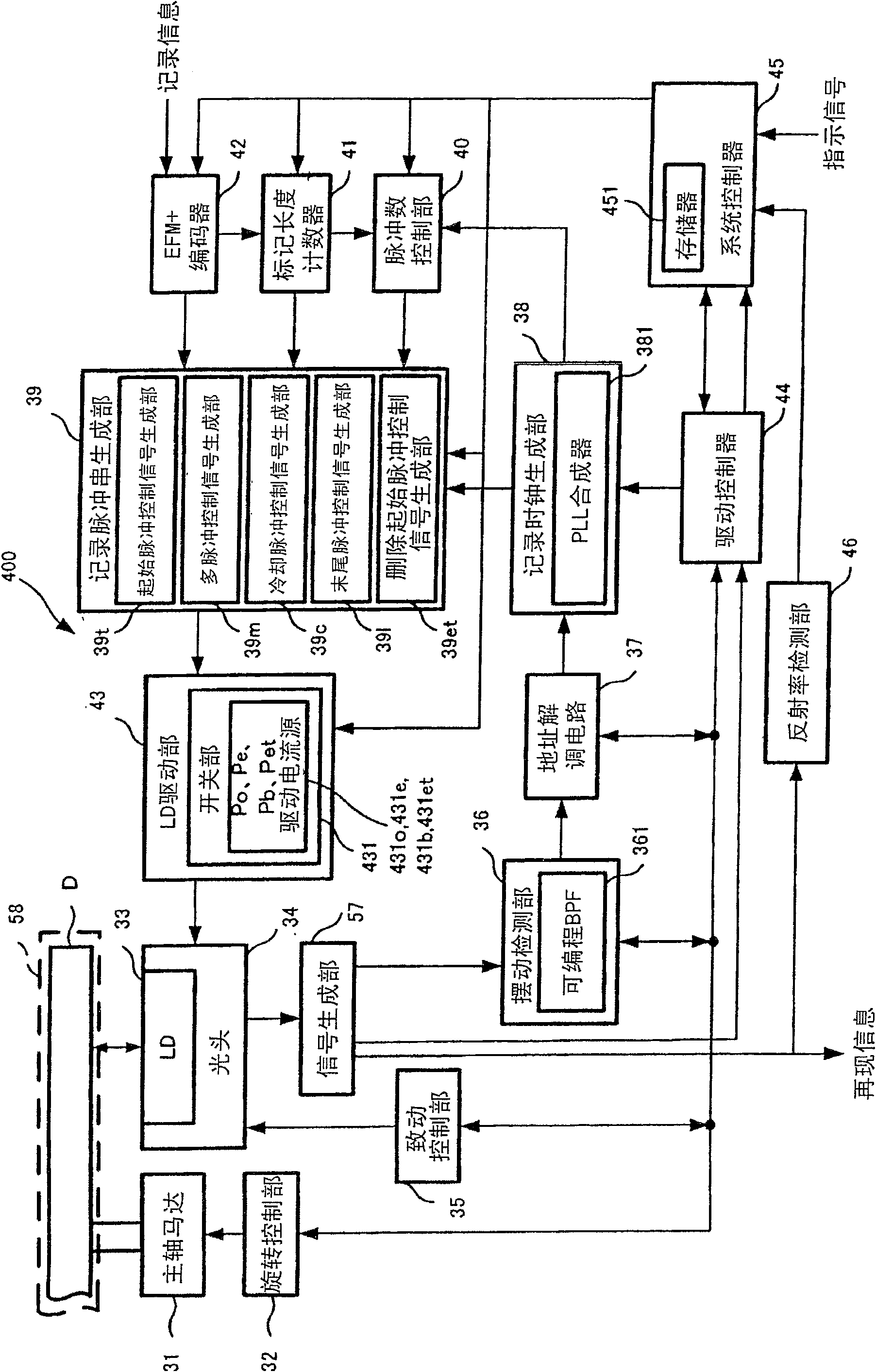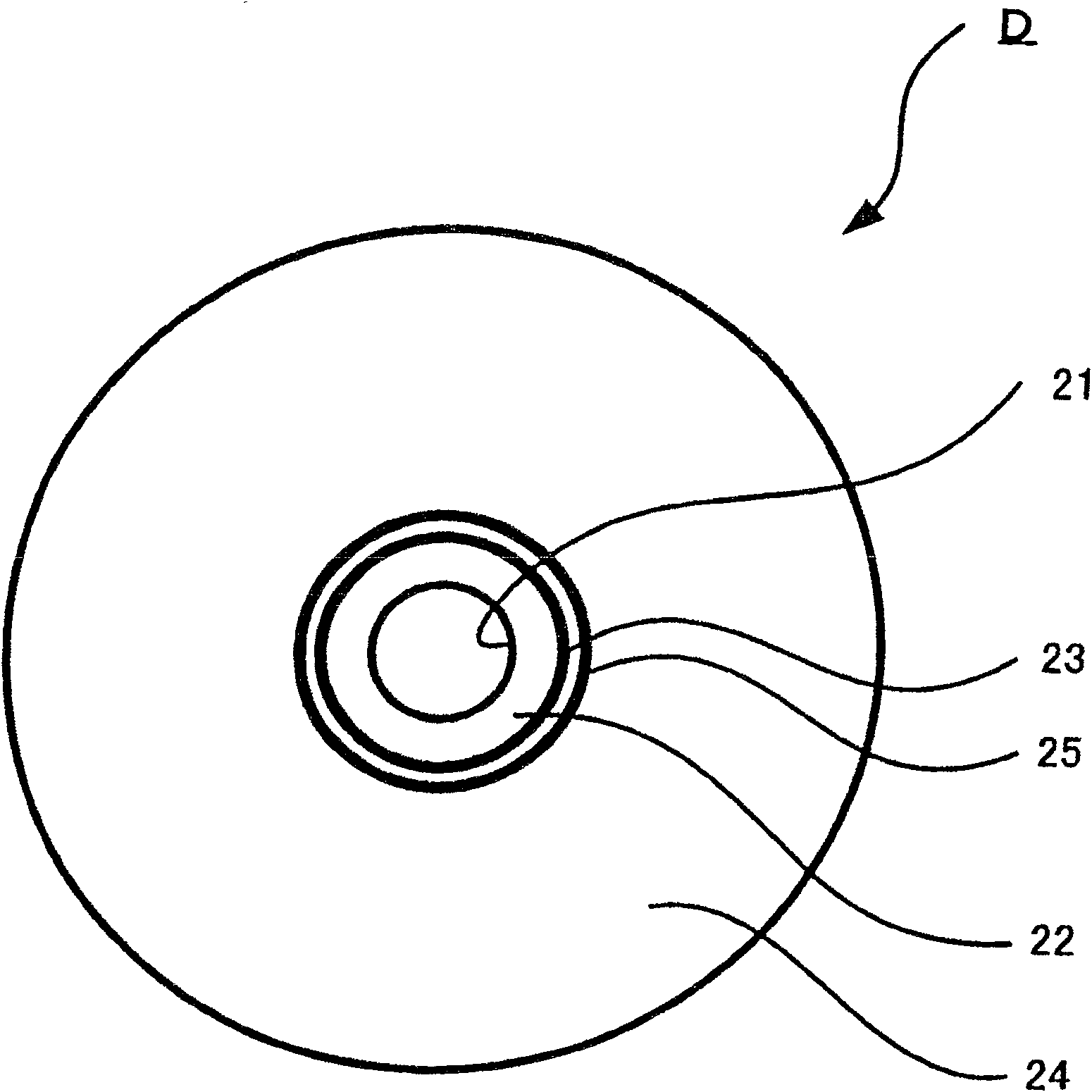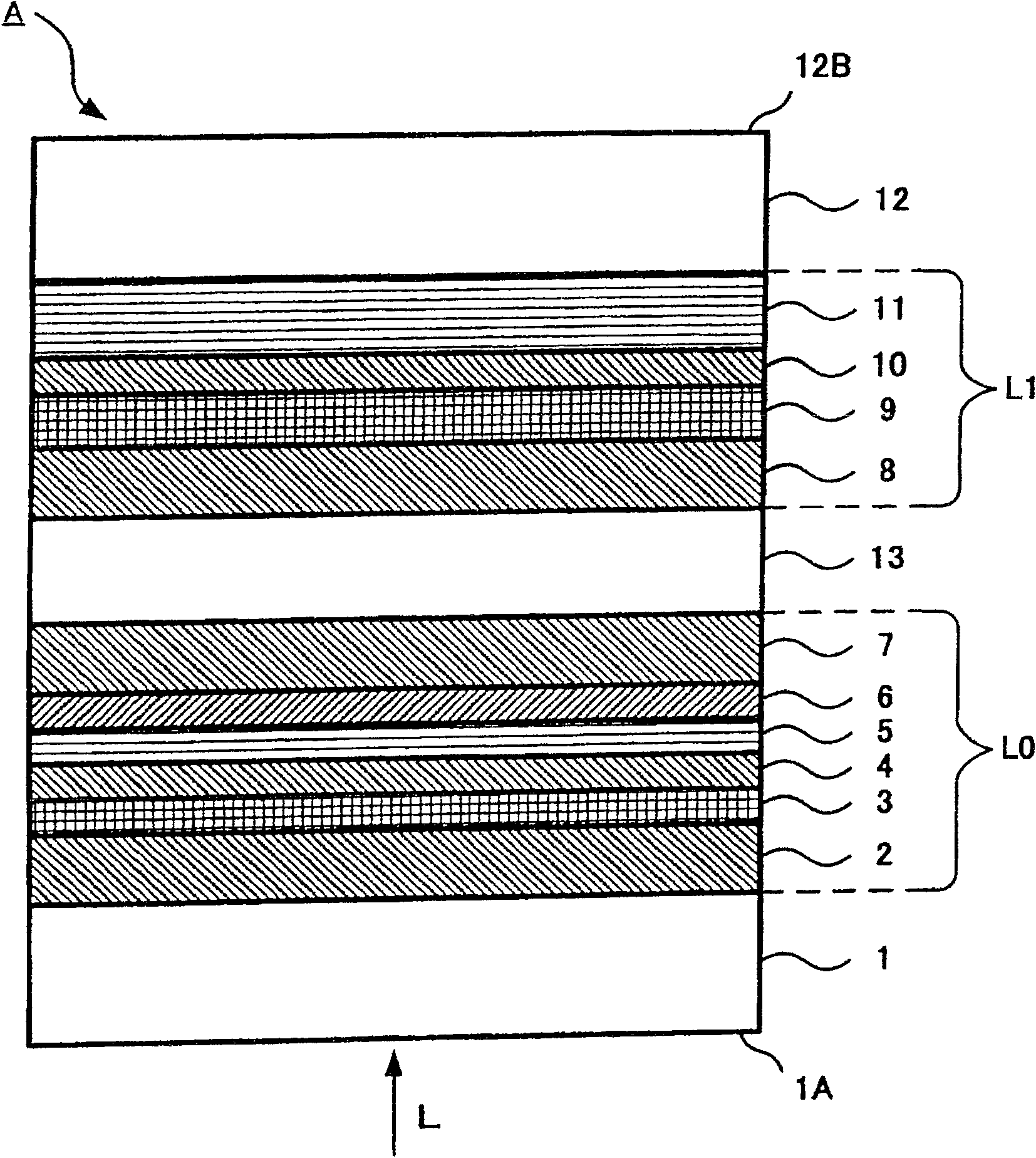Optical recording apparatus, optical recording method
A technology for optical recording and optical recording media, which is applied to optical recording heads, optical recording carriers, recording/reproducing by optical methods, etc., and can solve the problems of high laser power and difficult camera-integrated optical recording devices.
- Summary
- Abstract
- Description
- Claims
- Application Information
AI Technical Summary
Problems solved by technology
Method used
Image
Examples
no. 1 approach
[0040] (optical recording and reproducing device)
[0041] figure 1 One embodiment of the optical recording and reproducing device of the present invention is shown.
[0042] First, the spindle motor 31 rotates the optical recording medium D. As shown in FIG. The rotation control unit 32 controls so that the rotation speed of the spindle motor 31 becomes a recording linear velocity corresponding to a target recording velocity. In addition, a semiconductor laser (LD) 33 for recording, reproducing or erasing the optical recording medium D is movably arranged on the radial direction of the optical recording medium D, and has an objective lens (not shown) that condenses and irradiates laser light from the LD33. ) and an optical head 34 such as four-divided light-receiving elements (not shown).
[0043] Furthermore, as the light source for recording used in the optical recording and reproducing apparatus of the present embodiment, a high-intensity light source such as a laser be...
no. 1 example
[0109] Recording is performed on the L0 layer using the first recording pulse train P1, and recording is performed on the L1 layer using the second recording pulse train P2. The recording linear velocity is 7.5m / s (double speed of DVD).
[0110] The optimum recording power Po0 in the L0 layer is 20 mW, and the jitter at this time is 8.7%. The optimum recording power refers to the recording power at which the jitter shows the minimum value. The optimum recording power Po1 in the L1 layer is 32 mW, and the jitter at this time is 8.5%. The power ratio (Po1 / Po0) of the optimum recording power Po0 of the L0 layer and the optimum recording power Po1 of the L1 layer is 1.6. The modulation degree of the L1 layer is 55%. Here, if the degree of modulation shows a value of 50% or more, it meets the specification and is preferable. These results and the results of the second and third examples described later are shown in Figure 7 .
no. 2 example
[0112] Recording is performed by the first recording pulse train P1 on the L0 layer, and recording is performed by the first recording pulse train P1 on the L1 layer. The recording linear velocity is 7.5m / s (double speed of DVD).
[0113] The optimum recording power Po0 in the L0 layer is 20 mW, and the jitter at this time is 8.7%. The optimum recording power Po1 in the L1 layer is 37 mW, and the jitter at this time is 8.3%. The power ratio (Po1 / Po0) of the optimum recording power Po0 of the L0 layer and the optimum recording power Po1 of the L1 layer is 1.85. The degree of modulation of the L1 layer is 53%, showing a good value.
PUM
 Login to View More
Login to View More Abstract
Description
Claims
Application Information
 Login to View More
Login to View More - R&D
- Intellectual Property
- Life Sciences
- Materials
- Tech Scout
- Unparalleled Data Quality
- Higher Quality Content
- 60% Fewer Hallucinations
Browse by: Latest US Patents, China's latest patents, Technical Efficacy Thesaurus, Application Domain, Technology Topic, Popular Technical Reports.
© 2025 PatSnap. All rights reserved.Legal|Privacy policy|Modern Slavery Act Transparency Statement|Sitemap|About US| Contact US: help@patsnap.com



